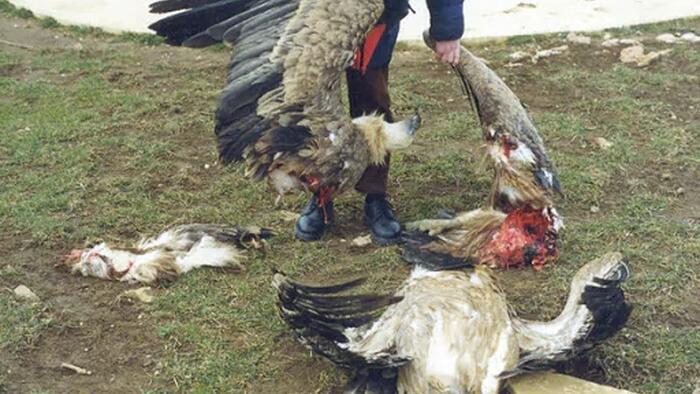Copyright NHL.com

Sam Montembeault raised a few eyebrows during a recent interview when he revealed he knew which hand pretty much every player in the NHL shot with, as well as the color of the tape job on each of their sticks. The Montreal Canadiens goalie confirmed his ability with NHL.com this week. “I just have a very good visual memory, so obviously looking at pucks you can see the tape color pretty easily and left or right,” Montembeault said. “We're so focused on the puck and on that player’s blade with their tape there, so it’s easy for me to remember and identify somebody with the stick and tape.” That ability to identify players by stick blade and tape job isn’t unique to Montembeault. As he pointed out, goalies spend a lot of time looking at the puck and the stick it’s on. Seattle Kraken goalies Joey Daccord, Philipp Grubauer and Matt Murray each figured it was common for NHL veterans to know the hand dominance and tape jobs of shooters. “Except for maybe some new guys and rookies, I could go around most of the League and pretty much do most of the guys,” ç said. “Tape color and if they don't tape the toe or do tape the toe, I would say most goalies will tell you they know who everyone is.” Murray said: “How I know players is what their stick looks like when they're shooting. The way a goalie knows a player usually is by the picture of his blade. If he's got a big toe curve, you can see it when he's shooting at you, whether he keeps it in tight vs. out away from him, when he likes to shoot it, the lie, or the way it sits.” Not all goalies have the same level of recall, however. That’s probably not a shock when it comes to Montembeault’s Montreal playing partner, Jakub Dobes, who has only played 22 NHL games. “I know (Edmonton Oilers forward Leon) Draisaitl has a big blade but there's a lot of players in this League and they change constantly so I don't know if I'll be as good as Monty,” Dobes said. But Jonathan Quick knows many puck-stopping peers will be surprised to learn that after 19 NHL seasons, he'd struggle to identify some New York Rangers teammates. “I know a lot of guys can do that,” Quick said shortly after making 23 saves in a 2-0 win against the Vancouver Canucks on Tuesday, his 64th shutout in the NHL, tying former Rangers great Henrik Lundqvist for 17th on the League’s all-time list, two behind Patrick Roy. “They know if everyone is a right shot, white tape, this, that and the other. I feel like I'm in the minority, where I don't. I don't know if I could tell you my teammates.” The question then is: What information really matters to an NHL goalie? If there is such a thing as goalies having a “book” on shooters, what are the crucial tidbits they need to know? For Quick, it’s more about the locations from which a player releases a shot. “A lot of it has to do with their feet and where the puck is in relationship to the feet,” Quick said. “I have a lot of things that help me narrow down where they're putting it, but where the puck is in the relationship to the feet is one of the bigger things that I focus on.” Whether a player shoots left-handed or right-handed is another important one. Not only does it dictate whether that player can one-time a pass or not, which can affect whether a goalie has enough time to push across on their skates or needs to slide across on their knees, but it also changes how far that pass will travel before it’s on their stick, and therefore the location where a goalie is pushing. “I don’t look at the tape. I just look at if he’s a lefty or a righty,” Dobes said. “It’s important because you’ve got to know if you have to push further or push less further.” Murray says knowing where all the right and left shots are on the ice is key. “Handedness changes the way you approach the game," he said, "especially on the power play, whether it's going from forehand to forehand through a seam, or from forehand to one-timer, whether they're coming downhill or opening up for a one-timer. So I think most guys know.” angers goalie Igor Shesterkin said: “Is it a one-timer or not? And what kind of player is it? Some players love to make a pass; some players love to make a shot.” Knowing those tendencies are also a huge part of a goalie’s anticipation process. “We get the most information out of the blade of a guy and the body language they shoot the puck with,” Grubauer said. “For the modern goalie, it's not looking down at the puck, it's seeing the bigger picture, what the release is. I've played long enough you know certain guys, how they shoot and what situations they might shoot. "With technology and sticks now, there's a uniqueness to how some shoot. Everybody has a skills coach now and they work on shooting, releasing the puck quick, pushing or pulling it, so those are all things we look for. But you play certain guys long enough, you know what their tape job is, what their stick is. I think most goalies in the League know.” Sometimes shooters switch it up, which can catch a goalie off guard before they can reset that internal database. “You can tell when a guy's fighting it, maybe hasn't scored in a while, sometimes they'll switch tape and I'll notice it right away,” Murray said. “I'll be like, 'That looks different, who's that?' And you take a look up, and you're like, ‘Oh, he switched his tape.’”



